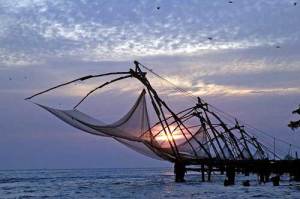 Its summer, a time to get away from your desk, loosen yourself from the shackles of a daily routine, pick up your suitcases and head on a trip that is sure to rejuvenate your soul and senses. This friday, Inchin Closer helps the Chinese navigate their way around business, bollywood and buddhism in India, next friday we continue the series with kung-fu, tea and business locales for Indian’s in China.
Its summer, a time to get away from your desk, loosen yourself from the shackles of a daily routine, pick up your suitcases and head on a trip that is sure to rejuvenate your soul and senses. This friday, Inchin Closer helps the Chinese navigate their way around business, bollywood and buddhism in India, next friday we continue the series with kung-fu, tea and business locales for Indian’s in China.
India was declared a holiday destination for Chinese tourists in 2003, allowing the Chinese to organize private travel tours to India through a travel agent. Since then a few thousand Chinese tourists have traveled to India. While visa’s have been a bone of contention between both countries, business and Buddhism continue to be the main draws for the Chinese.
The best time to visit India is between October to February when the weather is cool. During the rest of the year, India is either hot or wet. A popular travel route is the classic ‘golden triangle’ connecting New Delhi, Jaipur, the pink city, and Agra, where the Taj Mahal is located. While this route is tried and tested by many Chinese, Inchin Closer however, takes you through some other fascinating cities that you should also consider on your next trip to India –
Varanasi: The city of Shiva one of the three most powerful Hindu gods, Varanasi is India’s holiest destination. Ideally located on the banks of the river Ganges, Varanasi is colourful, charismatic and spiritual city. Though crowded, Varanasi offers the tourist a peek into the soul of India. The beating heart of the Hindu universe, it’s where rituals of immortality and death take place in the innumerable bathing ghats dotting the city.
Bodhgaya, Sarnath and Kushinagar – the holy triloka of the Buddhist adventurer. Chinese traveller Xuan Zang visited these sites in AD 640 on this quest from China.
Bodhgaya located in East India’s Bihar state, is the place where Prince Siddhartha Gautama attained enlightenment beneath a bodhi tree and so became the Buddha. Monasteries and temples dedicated to the Buddha from Buddhist schools around the world dot the pilgrimage site as does a descendant of the original Bodhi tree the Buddha sat under.
Sarnath 10 Kilometers North east of Varanasi, the Buddha came here to
preach his first sermon on the middle way to nirvana after he achieved enlightenment at Bodhgaya. A green and peaceful place to visit today, Sarnath has Buddhist ruins, stupa’s and monasteries.
Kushinagar the last stop on the Buddhist pilgrimage, is the place where Buddha died. Devotees from several countries have built temples here to accommodate monks and the pilgrims who visit this holy site.
Mumbai: The economic and film capital of India, Mumbai or as the locals still call it Bombay is the cosmopolitan hub of India. It’s a colorful cacophony city of high contrasts. Here the rich share floor space with the poor, film stars and fashionista’s rub shoulders with blue-collar workers and financial powerhouses call the city their home. While Mumbai parties until way past midnight, humility and humanity remain the soul of the city. Being the melting pot of India, where small town laborers come to realize their dreams, the city offers visitors an exciting mix of cuisine, language, fashion and style. A definite must visit for business and bollywood aficionados.
Kerala: A state in South India, filled with coffee and spices and also known as God’s own Country, Kerala is distinctly different from North India. Home to ancient Chinese fishing nets (Picture above), the palm tree-lined, hospitable state offers visitors a myriad choices – from a chance to step back and relax as they cruise through the backwaters, get a special Kerala massage on the beach at Varkala, to strolling through the majestic churches built by colonists centuries ago or visiting the Periyar Wildlife Sanctuary, Kerala offers the tourist a welcome break from the rest of India.
